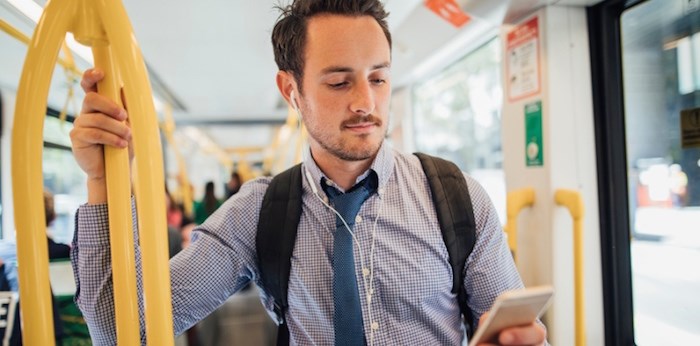A UBC postdoctoral researcher has been able to determine areas of the region that might be in need of better transit service simply by tracking commuters’ tweets.
In order to study and improve transit service, urban planners need mobility data on how people move around the city, but old fashioned rider surveys can be costly and inefficient.
 A UBC researcher tracked tweets to determine areas of the region that might be in need of better transit service.
A UBC researcher tracked tweets to determine areas of the region that might be in need of better transit service.
Saeid Allahdadian, a postdoctoral researcher at UBC, developed a method that uses social media data to map major travel routes in an effort to determine where transit service could be improved.
He was part of a group along with three other UBC students that earlier this year looked at commuting patterns and public transportation needs in Metro Vancouver as part of a data science project organized by the university’s Data Science Institute and the Cascadia Urban Analytics Cooperative, and sponsored by Microsoft.
“My colleagues analyzed the transit network and I studied patterns in social media data,” Allahdadian said in a press release.
Since Twitter gives developers open access to its data, he was able to analyze about 30,000 geotagged public tweets over three weeks this summer, with a focus on Surrey and downtown. The tweets were posted by 3,440 individuals at various locations around the region.
“Using machine learning — which enables computers to act and make data-driven decisions — I developed programs that could recognize and predict an individual’s movement patterns based on their different tweet locations throughout the day,” Allahdadian said.
“I plotted these trajectories onto a map of Metro Vancouver, extracting travel routes out of thousands of separate commutes.”
The results showed the most popular transit routes are through downtown Vancouver, followed by downtown to Surrey City Centre; Burnaby to downtown; the Broadway corridor; Kingsway; and, Langley to Surrey City Centre.
“When I examined travel times on public transit for these routes, I found that public transit generally matches up nicely with where the population is located,” Allahdadian said.
However, he did find some exceptions. Travel times on the Langley to Surrey route can range up to 80 minutes, he said, suggesting a need for faster, more frequent public transit.
Allahdadian said this technique can help transportation planners respond quickly to large events.
“If there’s a big sports event or concert and many people are heading downtown, transit can be redirected accordingly,” he said. “If there’s a natural disaster, responders can prioritize the areas where people are concentrated.”
The approach does have its limitations.
“Twitter users aren’t always willing to share information publicly,” Allahdadian said. “They also tend to be young and that can skew results.”
He added that more research is needed to refine this approach to transportation modelling.
“That said, social media data shows a lot of potential to help urban planners, public transportation planners and emergency responders do their jobs better."


